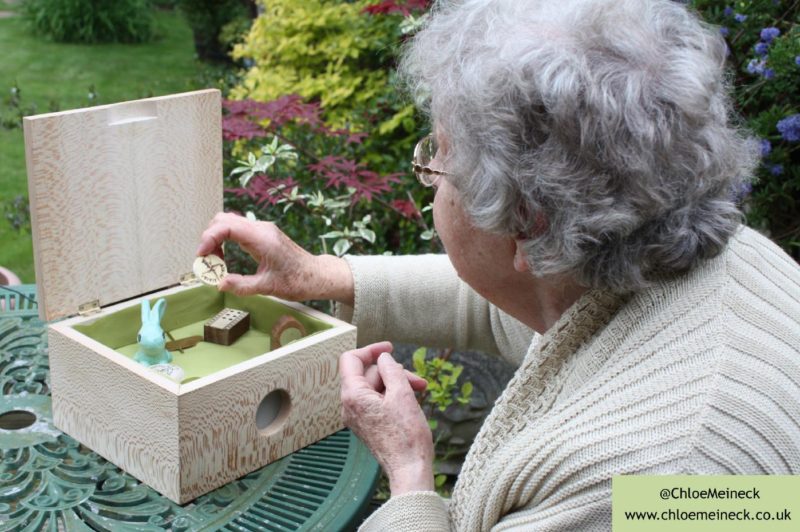We have been running the Designing for the Future student design competition with the University of Brighton for three years now and it is both hugely satisfying and exciting to see how the students go on to develop their design thinking.
Chloe Meineck first became involved with the project in 2011 when she entered The Hub, a multi sensory device designed for people with dementia to store electronically the soundtrack of their life including favourite music, people’s voices and ambient sounds.
Chloe contiuned her work on dementia into her final year, producing the Music Memory Box which uses different types of stimuli – touch, sound, scent and sight – to retrieve someone’s identity and reconnect them with the family and friends they have lost through dementia
Co-designed with user, Barbara, each object in the Music Memory Box represents a person Barbara treasures. For instance, the small square of tweed reminds her of her grandfather’s itchy tweed trousers which she used to sit on as a young girl, whilst they pruned the sweetpeas in his garden. This tweed is impregnated with the scent of sweetpeas, to heighten the memory and matched with music to heighten the effectiveness of the memory trigger.
The project uses the same technology as oyster cards, radio frequency identification (RFID) tags.
Says Chloe : “I hope I can carry on making bespoke Music Memory Boxes and also I want to broaden the process out and run workshops with large groups of people in homes, making communal boxes. I am also interested in co designing with the older population in regards to using technology, and see where interventions can be designed and made to help them.”
One of the aims of the Designing for the Future Competition is to encourage designers to consider the challenges presented by our ageing population. With dementia, Chloe has chosen to focus on one of the most difficult of those challenges. The conversation has only just started as to the role of design in supporting people living with dementia and Chloe’s work is an important contribution to that debate.
For more information about Choe and her work, visit www.chloemeineck.co.uk


